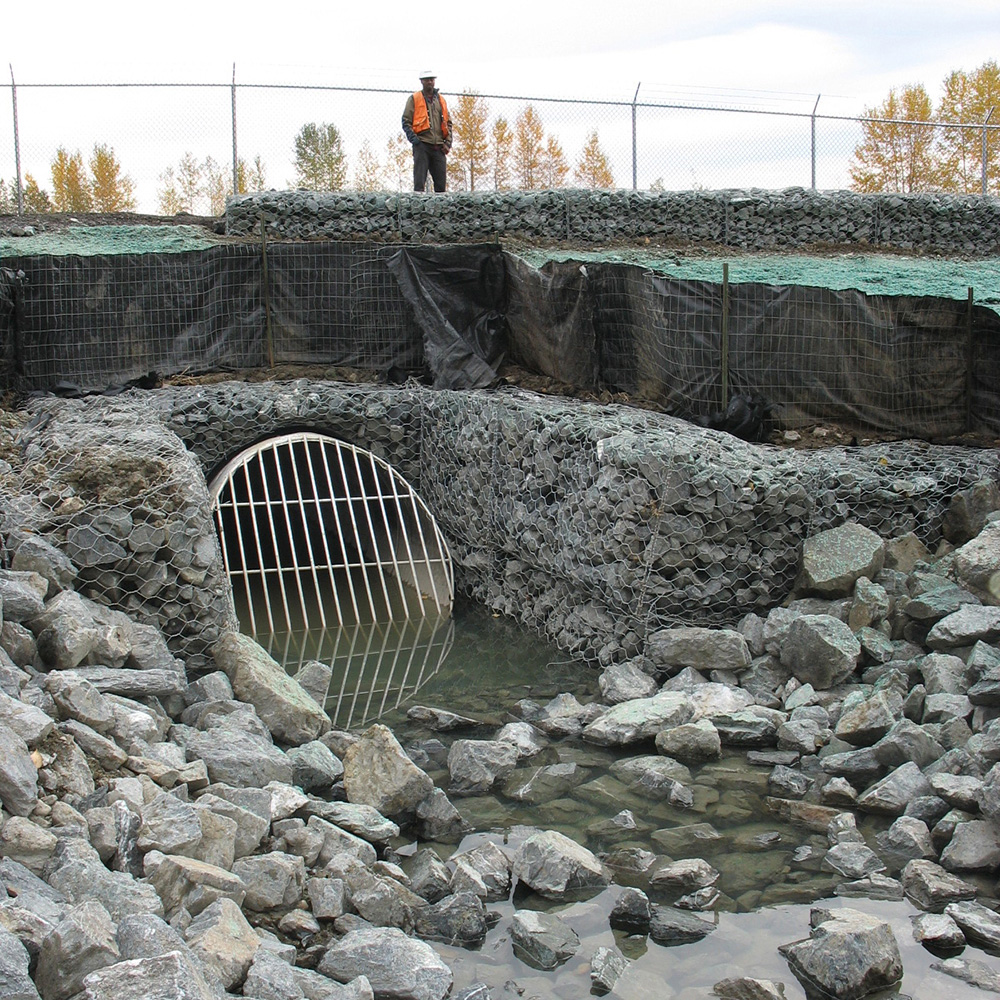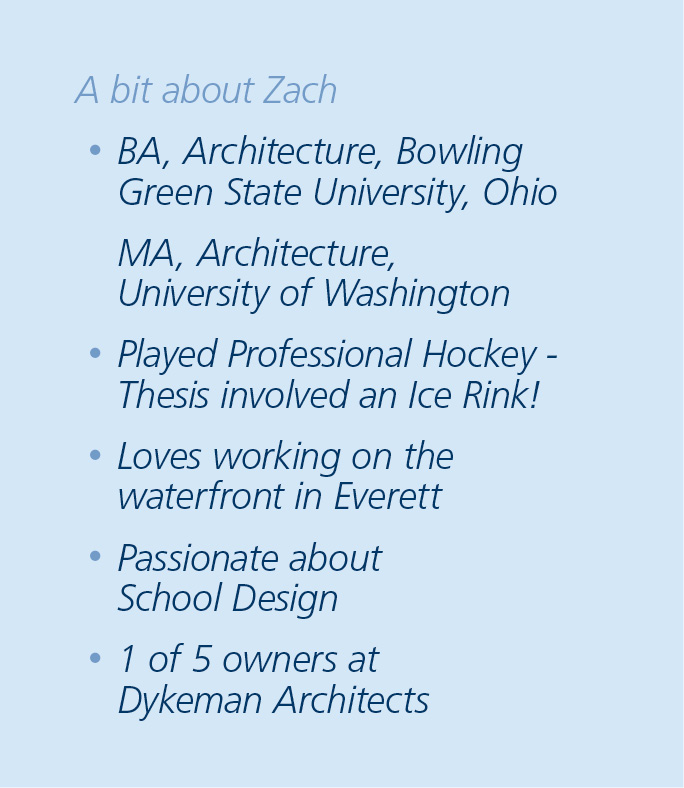In part 1 of this interview, Zach talks about how he got his start in education design and the ways the practice has changed over the years. This post (part 2) is published on the anniversary of the devastating fire at Whatcom Middle School in Bellingham, Wash., that occurred on November 5, 2009.
Zach Ham, Project Architect for the school replacement design, talks about the project in this video.
- In what way is designing a school different than other buildings your firm designs?
The user group is number one – the building and spaces have to support the learning environment for our students who are the future of our society. Secondly, safety and security is important in all of our projects, but school design specifically is a sensitive topic in response to past and some recent events. The public aspect is also a differentiation from other projects. School design incorporates a number of stakeholders that includes parents, students, and local business leaders. The visioning or predesign process often begins with a community meeting where you are presenting to more than 100 people who all want their voice heard. It takes a cohesive team and a strong facilitator to manage that exercise. And lastly, we know that schools are gathering spaces for communities. The community engagement in the design is extremely important.
- To what extent are the actual educators and administrators of the new facility included in the design process?
They are always involved, especially up front during the visioning and Educational Specification process. Every district manages the visioning a little differently, however, they all include the educators and administrators as part of the group. The difference is how many, who is going to represent the masses, and to what extent they are involved (i.e., only in Ed Specs). The educators and administrators absolutely need to be part of developing the space that supports learning and creating a strategic plan for the overall design. The first step of visioning is to engage students, staff, parents, and community members in a process to brainstorm hopes and dreams. The next step is to create a ‘design advisory committee‘ (named differently in each district) that is involved beyond the visioning, whose responsibility it is to make sure the design reflects the hopes and dreams discussed during visioning. And this group includes the educators and administrators. We prefer they are involved as much as possible to design the learning environment for a variety of learning styles and needs.
- What outside influences most affect K-12 design, and the Education Market Sector overall?
The first is the evolution of 21st century student. New teaching methods and technological advances are continually changing what a typical learning environment is and how a student uses it. We need to be educated and current with the outside influences that impact the 21st century student in order to be able to design for more independent and tech dependent spaces and understand the skills that are required of the ‘new student.’ And this transitions to the second most influential item that affects K-12 design – designing spaces that support skills that we don’t know are going to be around in 10-20 years. The most in-demand jobs today are going to be different in 10-20 years, and we don’t even know what those might be. So the design needs to be flexible and adaptable.
Lastly is the use of furniture. The traditional classroom of rank and file seating doesn’t support the 21st century student. As a result, furniture needs to be flexible, hackable, and adaptable to support project based learning, design-based learning, STEM, etc. The design of furniture is influencing building design.
- Putting your forecasting hat on, can you give us your perspective of where the Education Market Sector will be in 20 years?
Yes and no. No because of how rapidly things are changing. As noted in the last question, the most in-demand jobs today are going to be different in 10-20 years because of technology. So it’s difficult to predict how the educational market is going to respond. Technology and how it impacts the classroom is also difficult to predict. We have seen the change just in the last five years to traditional spaces like libraries and cafeterias because of the internet and handheld devices. It’s mind blowing to think about how our children will be learning as well as the impact of technology.
The yes side of the response is that we are seeing the evolution of career readiness at earlier ages. This isn’t going to change, and it will be in the forefront of importance for many years to come. We are and have been teaching students to go from fourth grade to fifth, fifth to sixth, but we are providing the guidance needed for a twelfth grader entering the real world. New teaching methods are starting to incorporate the skills needed for a student entering the workforce, and it’s starting at a very early age by means of project-based learning. Our schools have to support robotics classes, STEM, and maker spaces to assist with career readiness. Things are changing. It’s an exciting time for school design, and I only see it getting better!


